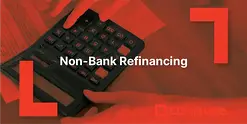Using Refinancing to Build Your Property Portfolio
 By
Trent Bradley
·
10 minute read
By
Trent Bradley
·
10 minute read

Building a property portfolio is a goal for many New Zealand investors seeking financial independence and wealth creation. Refinancing plays a central role in this journey, allowing you to systematically leverage equity from existing properties to fund deposits on additional investments. However, successful portfolio building requires more than simply refinancing whenever equity is available. It demands strategic thinking, careful risk management, market timing awareness, and sustainable growth practices that prevent over-extension.
This comprehensive guide explains how to use refinancing strategically to build property portfolios, provides a framework for sustainable portfolio growth, explores timing considerations for expansion, examines risk management strategies for growing portfolios, and helps you avoid common pitfalls that cause portfolio investors to fail.
The Equity Leveraging Model
Understanding how equity leveraging works provides the foundation for strategic portfolio building through refinancing.
How Portfolio Growth Through Refinancing Works
The portfolio building cycle typically follows a pattern. You purchase your first investment property with saved deposit funds, perhaps twenty percent equity on a property worth five hundred thousand dollars, requiring a one hundred thousand dollar deposit plus costs.
Over time, perhaps three to five years, this property appreciates—let's say to six hundred thousand dollars—while you've paid down your mortgage from four hundred thousand dollars to three hundred and eighty thousand dollars. You now have two hundred and twenty thousand dollars in equity.
You refinance this property up to eighty percent loan-to-value ratio, borrowing four hundred and eighty thousand dollars. After paying transaction costs, you've accessed approximately ninety-five thousand dollars in usable equity—enough for a deposit and costs on a second property worth four hundred thousand to four hundred and fifty thousand dollars.
You repeat this process as your properties appreciate and equity builds, systematically expanding your portfolio. Each refinancing event extracts accumulated equity to fund the next acquisition, creating a wealth-building cycle that can, over decades, build substantial property holdings.
The Mathematics of Leverage
Understanding leverage mathematics helps you appreciate both the power and risk of this strategy. If you own a property worth five hundred thousand dollars with a mortgage of four hundred thousand dollars, you have one hundred thousand dollars in equity. If the property appreciates by ten percent to five hundred and fifty thousand dollars, your equity grows to one hundred and fifty thousand dollars—a fifty percent return on your invested equity despite only ten percent property appreciation.
This leverage amplifies returns dramatically. A ten percent property appreciation across a portfolio of five properties with average equity positions of twenty-five percent delivers approximately forty percent returns on your invested equity.
However, leverage also amplifies losses. If property values fall ten percent, your equity decreases by approximately forty percent. This double-edged nature of leverage means portfolio building through refinancing can create substantial wealth or substantial problems depending on market conditions and your risk management.
Required Conditions for Sustainable Growth
Successful portfolio building requires several fundamental conditions. Property values must appreciate over time to create the equity you're extracting. If markets stagnate or decline, equity doesn't accumulate and you can't fund new acquisitions.
Your income must be sufficient to service expanding debt as each new property adds mortgage obligations. Even with rental income offsetting investment property costs, you need strong personal income to support growing portfolio debt.
You must maintain discipline around leverage levels, resisting temptation to maximize every property to dangerous debt levels. And you need sufficient financial reserves to weather problems like extended vacancies, unexpected repairs, or interest rate increases without forced sales.
Strategic Timing of Portfolio Expansion
When you refinance and expand your portfolio matters significantly to long-term success.
Market Cycle Considerations
Property markets move in cycles of growth, peak, plateau, and correction. Ideally, you're building your portfolio during growth phases when appreciation creates equity to extract and property prices haven't peaked. Buying at peaks using maximum leverage exposes you to corrections that can eliminate equity and force distressed sales.
However, timing markets perfectly is impossible. Instead of trying to precisely time acquisitions, focus on buying quality properties at fair prices regardless of exact market timing. Properties held long-term through multiple cycles generally appreciate despite short-term fluctuations.
Avoid the trap of waiting indefinitely for perfect buying opportunities that never materialize. Some investors spend years waiting for market corrections that don't occur or are so brief they miss them, foregoing years of rental income and appreciation while their money sits idle.
Interest Rate Environment
Current interest rate levels and trends affect refinancing costs and serviceability. When rates are low and stable, refinancing to expand is more affordable and less risky. When rates are rising or at historically high levels, the carrying costs of expanded portfolios become more burdensome.
Monitor Reserve Bank of New Zealand announcements and economic indicators suggesting likely interest rate directions. Consider fixing rates on new acquisitions when rates are favorable to lock in costs, or keeping loans floating when rates are high and likely to fall.
However, don't let interest rate concerns paralyze you entirely. If you're only willing to buy when rates are at historic lows, you'll rarely act. Good properties purchased at fair prices generally deliver positive returns across interest rate cycles.
Personal Circumstance Timing
Your personal financial situation matters as much as market conditions. Expand your portfolio when your income is stable and strong, supporting increased debt servicing. Your emergency reserves are healthy and can cover unexpected expenses or vacancy periods without stress. You have mental and emotional capacity to manage additional properties without overwhelming stress.
Avoid expanding when you're experiencing job instability or income uncertainty, facing personal or family challenges consuming your energy and attention, or already financially stressed with existing properties or debts.
Portfolio building is a long-term strategy—there's no rush to acquire properties when your personal circumstances aren't optimal.
Geographic and Property Type Diversification Timing
As your portfolio grows, consider diversification across different geographic areas and property types. Don't build your entire portfolio in one suburb or city, as local economic downturns could affect all properties simultaneously.
Time your refinancing to pursue properties in different areas when opportunities arise. If you own three properties in Auckland, your fourth acquisition might target Wellington or provincial cities for geographic diversification. If you own multiple large family homes, consider adding units or apartments for property type diversification.
This timing strategy requires patience, as suitable diversification opportunities might not align perfectly with when equity becomes available for extraction.
Risk Management in Portfolio Building
Managing risk becomes increasingly important as your portfolio and debt levels grow.
Maintaining Safe Loan-to-Value Ratios
While lenders might allow you to borrow up to eighty percent on each property, maintaining lower average LVRs across your portfolio provides essential safety buffers. Aim for portfolio-wide LVR of seventy percent or less if possible, with some properties at higher LVR offset by others with substantial equity.
This conservatism protects you from market corrections, maintains refinancing capacity if opportunities arise, and allows you to weather financial challenges without forced sales. Properties with high equity provide options during difficult periods—you can refinance for emergency funds or sell without owing more than properties are worth.
Calculate your portfolio-wide LVR regularly by dividing total debt across all properties by total property values. If this ratio exceeds seventy-five percent, consider pausing expansion and focusing on debt reduction until you've rebuilt equity buffers.
Stress Testing Your Portfolio
Before each refinancing and acquisition, stress test your portfolio against adverse scenarios. Calculate whether you could service all mortgages if interest rates rose by two to three percentage points, if one or more properties sat vacant for six months, or if property values fell twenty percent.
If your portfolio fails these stress tests, you're over-leveraged and should pause expansion or reduce exposure. Successful investors can survive worst-case scenarios, not just average conditions.
Model different scenarios using spreadsheets or financial planning tools, adjusting assumptions to see how changes affect your financial position. This forward-thinking identifies vulnerabilities before they create crises.
Diversification Strategies
Beyond geographic diversification, consider other diversification approaches. Mix property types including houses, units, and apartments. Target different tenant demographics with some properties appealing to families, others to young professionals, and perhaps some to students. Include properties at different price points rather than only high-value properties.
Consider including one or two properties in regional centers with strong fundamentals but lower prices, reducing overall portfolio risk concentration in expensive major city markets.
Diversification reduces risk that single factors—like local economic downturns or changes to tenant demographics—devastate your entire portfolio simultaneously.
Cash Flow and Reserve Management
Maintain substantial cash reserves as your portfolio grows. A common guideline suggests holding reserves equal to six to twelve months of total portfolio holding costs including mortgages, rates, insurance, and management fees.
This reserve fund allows you to weather extended vacancies, unexpected repairs, or income disruptions without distress. Calculate your total monthly portfolio costs and multiply by at least six to determine minimum reserve levels.
Resist temptation to deploy all available capital into new properties. Maintaining reserves is more important than maximizing portfolio size.
Insurance and Asset Protection
As your property portfolio represents increasing wealth, ensure appropriate insurance coverage. Each property needs adequate building insurance and landlord liability insurance. Consider income protection insurance covering your personal income if illness or injury prevents work.
Some investors use trust structures or company ownership for asset protection, though these structures have costs and complexity requiring professional advice. Discuss asset protection strategies with lawyers specializing in property investment.
Funding Models for Portfolio Growth
Different approaches to funding acquisitions suit different investor profiles and market conditions.
Equity Recycling Through Refinancing
The standard model involves systematically refinancing properties as equity accumulates, extracting usable equity to fund deposits on new acquisitions. This approach maximizes leverage and portfolio growth speed but also maximizes debt levels.
Refinancing typically occurs every two to five years per property as equity builds through appreciation and principal repayment. Each refinancing extracts accumulated equity while resetting your loan to higher balances and potentially longer terms.
This model works well in appreciating markets with stable interest rates but creates vulnerability in declining markets or during interest rate spikes when higher debt levels become burdensome.
Hybrid Growth with Cash Flow Reinvestment
Rather than maximizing refinancing to fund all acquisitions, some investors use rental cash flow surpluses to accelerate savings for deposits alongside equity extraction. Positive cash flow properties generate monthly surpluses after covering all costs. These surpluses accumulate over time, supplementing equity extraction to fund new deposits.
This hybrid approach builds portfolios more slowly than pure equity extraction but maintains lower overall debt levels and creates regular savings habits supporting financial discipline. Combined rental surpluses across multiple positive cash flow properties can accumulate substantial deposit funds within a few years.
Debt Reduction Phases Between Growth Phases
Sophisticated investors alternate between growth phases and debt reduction phases. During growth phases, they refinance to extract equity and acquire new properties, expanding the portfolio. Once they reach target portfolio sizes or become concerned about market conditions, they shift to debt reduction phases focusing on paying down mortgages rather than acquiring more properties.
This approach prevents continuous expansion to unsustainable debt levels while still pursuing portfolio growth during favorable periods. Debt reduction phases rebuild equity buffers and reduce interest costs, positioning investors to survive market corrections.
The discipline to stop expanding when appropriate despite available equity and opportunities separates successful long-term investors from those who over-extend and eventually face distressed sales.
Partnership and Syndication Models
Some investors build portfolios through partnerships or property syndication rather than solo expansion. Partnering with other investors allows you to acquire larger or better properties than you could afford individually, share risks and rewards across multiple parties, and leverage different partners' strengths like property management skills or financial capacity.
Syndication involves pooling funds from multiple investors to acquire properties, typically with professional management structures. This allows participation in larger commercial or development projects beyond individual capacity.
These models require comprehensive partnership agreements, clear governance structures, and compatible partners sharing similar investment philosophies. Poor partnerships create conflict and problems worse than solo investing, so choose partners carefully.
Common Portfolio Building Mistakes
Learning from others' mistakes helps you avoid common pitfalls that derail portfolio building ambitions.
Over-Leveraging and Excessive Speed
The most common mistake is expanding too quickly without adequate equity buffers or reserves. Investors get excited by portfolio growth and refinance every property to maximum LVR whenever possible, acquiring as many properties as lenders will allow.
This aggressive expansion works wonderfully during rising markets but creates disasters during corrections or rate increases. Properties become unaffordable to hold, forcing distressed sales that eliminate years of gains.
Slower, more conservative growth might seem frustrating when you're eager to build wealth quickly, but sustainable approaches ultimately build larger portfolios than aggressive strategies that end in failure.
Chasing Yield Without Capital Growth
Some investors focus exclusively on rental yield, purchasing cheaper properties in lower-quality areas or regional centers offering high percentage returns on investment. While strong yield is valuable, capital growth ultimately creates wealth in property investing.
Properties in declining areas might offer twelve percent yields but experience negative capital growth, ultimately destroying wealth despite strong cash flow. Balance yield and growth potential, accepting moderate yields in growth areas rather than high yields in stagnant or declining markets.
Neglecting Due Diligence
As you build portfolios and gain confidence, there's temptation to reduce due diligence rigor on each acquisition. Experienced investors sometimes rush purchases without thorough inspections, proper research, or careful analysis, assuming their experience compensates for reduced diligence.
This complacency leads to purchasing properties with hidden problems, overpaying for acquisitions, or buying in poor locations that never deliver expected returns. Maintain disciplined due diligence regardless of experience level or portfolio size.
Ignoring Property Management Quality
Poor property management becomes more problematic as portfolios grow. One badly managed property in a small portfolio is annoying; badly managed properties across a ten-property portfolio create constant stress and financial problems.
Invest in quality property management even though it costs more. Good managers minimize vacancies, maintain properties properly, handle tenant issues effectively, and provide accurate financial reporting. These services become increasingly valuable as portfolios expand and your time becomes more limited.
Failing to Plan Exit Strategies
Portfolio building should have endgame consideration. Are you building for retirement income through rental cash flow? Planning to sell properties gradually to fund retirement? Intending to pass the portfolio to children?
Your refinancing strategies should support your ultimate goals rather than just expanding for expansion's sake. Some investors build massive portfolios but never achieve the retirement income they hoped for because they're carrying too much debt. Others build portfolios but face tax disasters when eventually selling.
Consider your ultimate objectives before each refinancing and acquisition, ensuring your portfolio building supports your actual life goals.
Technology and Tools for Portfolio Management
As portfolios grow, proper systems become essential for managing complexity.
Property Portfolio Software
Specialized software helps track all properties centrally including loan details, equity positions, and LVR calculations. Rental income and expenses with cash flow analysis across the portfolio are maintained automatically. Important dates like insurance renewals, fixed term expiries, and tenancy end dates are tracked. Tax documentation and reporting simplify year-end accounting.
Popular options include PropertyMe, MyRent, and various property investment-specific accounting software. While these involve monthly costs, the time savings and improved financial management justify expenses for portfolios of three or more properties.
Spreadsheet Systems
For smaller portfolios or investors preferring more control, comprehensive spreadsheet systems track similar information to dedicated software. While requiring more manual data entry, spreadsheets offer complete customization and no ongoing costs.
Build spreadsheets tracking each property's purchase price, current value estimate, and valuation dates. Record mortgage balances, interest rates, and repayment amounts. Log rental income, expenses, and net cash flow. Calculate portfolio-wide statistics like average LVR and total monthly cash flow.
Regular updating—at least monthly—keeps you informed about your portfolio's financial performance and positions you to make informed refinancing and acquisition decisions.
Financial Planning Integration
Integrate property portfolio data with broader financial planning including KiwiSaver, other investments, and personal assets and debts. This holistic view ensures property investment supports rather than dominates your overall wealth building.
Work with financial advisers who understand property investment and can model how portfolio growth affects your retirement planning and long-term wealth accumulation.
Professional Support for Portfolio Building
Successful portfolio building rarely happens in isolation—most successful investors build teams of professionals supporting their strategies.
Building Your Advisory Team
Your core team should include a mortgage broker specializing in investment property and portfolio lending who understands complex multi-property refinancing. An accountant experienced with property investment who optimizes tax structures and provides strategic advice. A lawyer for purchase documentation and ownership structure advice. And one or more quality property managers who minimize your time investment while maximizing property performance.
As portfolios grow, you might add quantity surveyors for depreciation schedules, financial advisers for holistic wealth planning, and building inspectors for pre-purchase assessments.
Invest in quality professionals rather than choosing based solely on lowest costs. Good advisers save you far more than they cost through better outcomes and avoided mistakes.
Coordinating Refinancing Across Advisers
Portfolio refinancing should be coordinated across your professional team. Your mortgage broker structures optimal loan arrangements, your accountant advises on tax implications and optimal structures, your financial adviser ensures refinancing aligns with broader wealth strategies, and your property managers provide rental income documentation and market insights.
Don't compartmentalize these advisers—encourage communication between them to ensure coordinated advice supporting your overall strategy.
At Luminate Financial Group, we specialize in helping property investors build portfolios through strategic refinancing by understanding your long-term portfolio goals and designing refinancing strategies supporting them, stress testing portfolio expansion plans to ensure sustainability, coordinating with your accountants and financial advisers for holistic planning, and providing ongoing guidance as your portfolio evolves and market conditions change.
We work with investors at all stages from acquiring their second property through managing established portfolios of ten or more properties. Our experience across hundreds of portfolio investors means we understand successful strategies and can guide you toward approaches that build wealth sustainably rather than creating over-leveraged positions that ultimately fail.
Ready to build or expand your property portfolio through strategic refinancing? Contact Luminate Financial Group for specialist guidance. We'll help you design sustainable growth strategies, manage risk appropriately, and build the property portfolio that supports your long-term wealth goals.

Trent Bradley
Trent Bradley is a New Zealand financial advisor specializing in property-backed finance and investment consulting. With over 26 years of experience running his mortgage broking business, he has helped wholesale investors access high-yield property-backed loan opportunities. For the past 12 years, Trent has led Luminate Finance, a New Zealand finance company dedicated to connecting investors with secure property investment solutions.






















